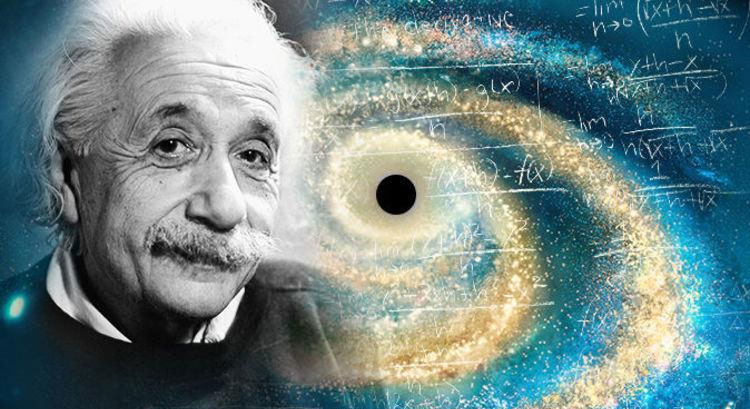100 years ago, eclipse turned Einstein into a star
In human history, solar eclipses have never been considered a good omen. People often associate the times it appears to war or the collapse of an empire. But in 1919, the solar eclipse revealed one of the mysteries of the universe.
A century ago, on the small island off West Africa, some astronomers led by Arthur Eddington directed their telescope to the Sun when a solar eclipse appeared. Their goal is to measure the distance of distant stars during the total solar eclipse.
During this observation, astronomers have studied their star, confirming one more thing: Albert Einstein is the star of human physics.

Many Einstein's theories were based on imaginary experiments in his head.(Photo: Getty Images).
All of our knowledge of modern physics and astronomy, as well as GPS technologies that determine the direction of today, are related to a landmark scientific experiment, demonstrating general relativity. of Einstein 100 years ago.
At that time, scientists from England and Germany were on the table. They bet on how the universe works. On one side, Einstein was born in Germany and the other was the father of modern science: British scientist Isaac Newton. At the same time, Germany and England had just finished the bloodiest fight that both sides had experienced: World War I.
Gravity and light conflict
Scientists' disagreements involve gravity and light . According to Newton's concept of physics, light has no mass and therefore cannot be affected by gravity. Therefore, it must always move in a straight line.
Einstein's general theory of relativity published in 1915 did not object to Newton's mass of light, but added the notion that gravity could warp the structure of space-time.
Thus, although light has no gravity, but the space it passes through can be bent by gravity. Therefore, it is indirectly affected and the trajectory is no longer a straight line.
He hypothesized that this effect could be seen around a large enough object, like the Sun, because it possessed enough gravitational force to bend space.
This means that the position of distant stars will be deviated in a very small amount when their light approaches the Sun. Of course, it is difficult to see the light from any star when the Sun shines brightly. So Eddington began experimenting with Einstein's theory by observing the stars in a solar eclipse .

The light of distant stars appears dimly below the eclipse.(Photo: Cnet).
Today, anyone who sees a total solar eclipse can attest that in a few dark minutes, the light from distant stars (obscured by the sun), sometimes appears shortly True halo when the shadow of the moon obscures the light of the sun. That means light from them has been bent to the earth.
On May 29, 1919, Eddington captured a few stars when the sun was darkest. Through calculations, the positions of these stars in the sky indicate Einstein's theory is correct. When the results were published at the end of the year, Einstein became a star in the scientific world and survived to this day.
Bright star between eclipses
"A century ago astronomers confirmed general relativity to be true. It has forever changed our understanding of the universe," said Mike Cruise's Royal Astronomical Society Chairman. know.
"Einstein and Eddington's work is a great example of international cooperation after the First World War. This is also a clear proof that science can overcome barriers in the chaotic period , " he said. added.
Thanks to being validated by an eclipse experiment in 1919, relativity was recognized as true. Engineers apply the ability to bend the space of Earth's mass to correct the equations, helping the global positioning system to be accurate to one centimeter. Today, satellites are widely used from navigation to weather forecasts.

A half-tone reproduction (a technique that uses only dark spots but creates a gray feel of existence) of one of the images taken in an eclipse.(Photo: Royal Astronomical Society).
In the following decades, many other experiments continue to prove Einstein right. The recent discovery of gravitational waves and the first direct image of a black hole serves as evidence, suggesting that gravity seems to work just as Einstein predicted in the entire universe.
Before the eclipse of 1919, Einstein's ideas were considered too radical and difficult to understand, and only a way of verifying with 'sight and ears' could be widely accepted. When the results are published, controversy remains. But each decade has passed, relativity is scientifically more clearly proved, and eclipse is also more interested in many areas of science.
This amazing natural phenomenon will occur on July 2, but is only observed in countries in South America and the South Pacific.
- The famous eclipse in history
- The picture changed the world 100 years ago
- Eclipse, eclipse appeared in November
- Anbert Einstein - The life of the inventor of relativity
- Experimental relativity on a super black star, Einstein is right again
- Video: The coronary eclipse recommended in Australia
- Astronomers discovered that the phenomenon was contrary to what Newton and Einstein had drawn
- Vietnam did not observe the first solar eclipse of the year
- Extremely rare eclipses happen this afternoon
- Where is the best eclipse on March 9 in Vietnam?
- Tomorrow Vietnam will receive a solar eclipse
- The new finding contrasts with Einstein's brain
 Van Allen's belt and evidence that the Apollo 11 mission to the Moon was myth
Van Allen's belt and evidence that the Apollo 11 mission to the Moon was myth The levels of civilization in the universe (Kardashev scale)
The levels of civilization in the universe (Kardashev scale) Today Mars, the sun and the Earth are aligned
Today Mars, the sun and the Earth are aligned The Amazon owner announced a secret plan to build a space base for thousands of people
The Amazon owner announced a secret plan to build a space base for thousands of people